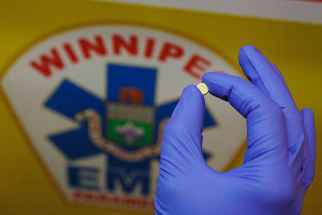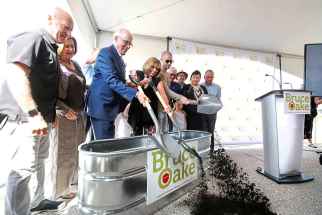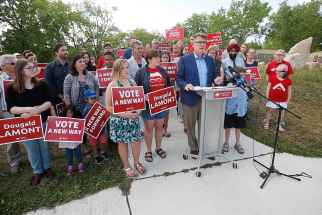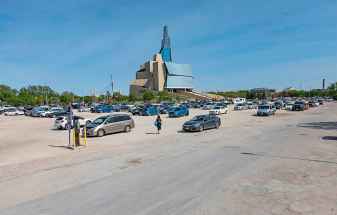A pawsitive experience Trainers offer tips on how to make dog-park encounters work for everyone
Read this article for free:
or
Already have an account? Log in here »
To continue reading, please subscribe:
Monthly Digital Subscription
$0 for the first 4 weeks*
- Enjoy unlimited reading on winnipegfreepress.com
- Read the E-Edition, our digital replica newspaper
- Access News Break, our award-winning app
- Play interactive puzzles
*No charge for 4 weeks then price increases to the regular rate of $19.00 plus GST every four weeks. Offer available to new and qualified returning subscribers only. Cancel any time.
Monthly Digital Subscription
$4.75/week*
- Enjoy unlimited reading on winnipegfreepress.com
- Read the E-Edition, our digital replica newspaper
- Access News Break, our award-winning app
- Play interactive puzzles
*Billed as $19 plus GST every four weeks. Cancel any time.
To continue reading, please subscribe:
Add Free Press access to your Brandon Sun subscription for only an additional
$1 for the first 4 weeks*
*Your next subscription payment will increase by $1.00 and you will be charged $16.99 plus GST for four weeks. After four weeks, your payment will increase to $23.99 plus GST every four weeks.
Read unlimited articles for free today:
or
Already have an account? Log in here »
Hey there, time traveller!
This article was published 23/08/2019 (2300 days ago), so information in it may no longer be current.
When Janelle McLeod, a Winnipeg dog trainer, visits the city’s dog parks with her crew — four small senior dogs named Pebbles, Biscuit, Pint and Piggy — she doesn’t always like what she sees.
“I’m very frustrated by the interactions I see happening between dog owners and dogs,” she says. “Sometimes it just breaks my heart. And you hear incidences of things happening and it’s serious. It can be something as simple as an incident that scares another dog, to an outright incident where your dog could get seriously hurt or killed.”
The problem, McLeod says, is that many owners do not understand the difference between what’s play and what’s not play. Nor do they understand how dogs communicate with one another, which is precisely why McLeod offers workshops and classes teaching owners the basics of canine body language.
Here, McLeod and fellow trainer Karen O’Quinn offer their insight on what owners can do to keep our dog parks safe and fun for everyone.
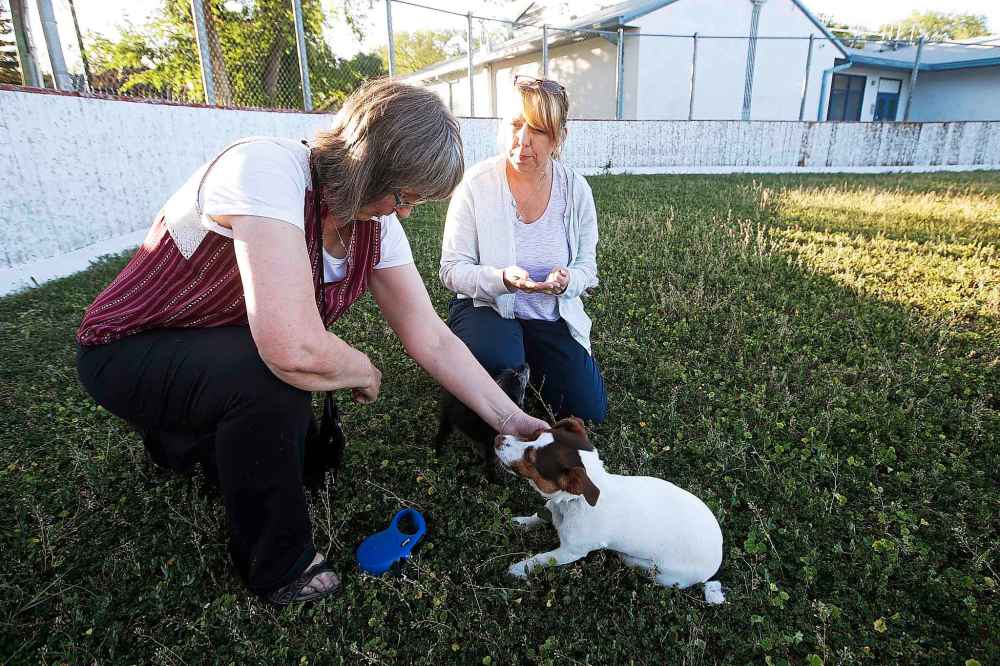
Before you go, know your doggo
Depending on the personality and age of your dog, the dog park might not be a good fit.
“It’s like people at a party; not everyone wants to go to the big party,” O’Quinn says. “Know your dog and know where they’re comfortable and then respect that.”
Working on your dog’s recall — coming to you when they’re called — is also critical prior to heading to the dog park.
“If they don’t have a good recall, and you unhook that leash and they’re off playing and you call them and they go, ‘Nah, not right now,’ that’s when trouble happens,” O’Quinn says. “If they have good recall, you’ll be able to get them back.”
A note here on socialization: as O’Quinn points out, socializing your dog does not mean taking them to a dog park to play with other dogs. Socialization is a process that should happen in a controlled environment while dogs are still pups, which is also when everyone is on a more even playing field in terms of size.
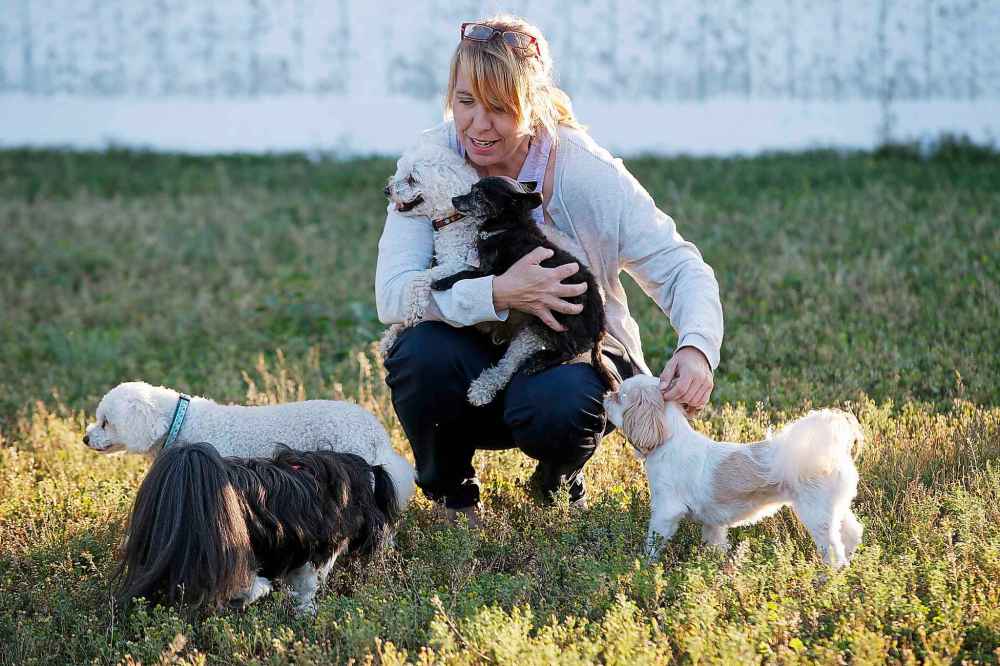
Learn to speak dog
Dogs communicate with each other, just as we do. Learning the basics of canine body language allows owners to distinguish between appropriate and inappropriate play, how to spot trouble and when to intervene. Both trainers have offered workshops and classes on this subject, and there’s also information available online.
“You have to train yourself, basically,” O’Quinn says. “Once you learn how dogs speak to each other and what they’re saying, what a difference. They know. Then you can see the other dog saying, ‘No, I don’t want to play with you,’ and you go, ‘gotcha, I understand that, my dog’s not listening — you, over here, he said no.’”
Both trainers point to the work of Turid Rugaas, the pioneering Norwegian dog trainer who identified at least 30 “calming signals” dogs use to communicate to each other and wrote a bestseller on the subject, On Talking Terms With Dogs.
Ruff interactions
“Don’t worry, my dog is friendly!”
“Mine’s not.”
Any dog owner who has that interaction knows that neighbourhood walks can also be a bit of a delicate social dance. But according to trainer Karen O’Quinn, it’s actually very common for dogs to be uncomfortable with leash greetings and it’s not an indictment of your dog’s “unfriendliness.”
“Don’t worry, my dog is friendly!”
“Mine’s not.”
Any dog owner who has that interaction knows that neighbourhood walks can also be a bit of a delicate social dance. But according to trainer Karen O’Quinn, it’s actually very common for dogs to be uncomfortable with leash greetings and it’s not an indictment of your dog’s “unfriendliness.”
“Leash greeting is horrible. It’s really not the time or how to introduce dogs,” she says, noting leashes limit a dog’s body language.
“They feel trapped, because they can’t go anywhere. If they feel a collar being pulled, the arousal levels go up. So, by the time you get to the other dog, it’s often not very pretty because all of that is happening.”
As in the dog park, it’s all about body language. When dogs do want to meet, the body language is polite, O’Quinn says. They approach at an angle, and they communicate the whole time.
When dogs come in too hot, even if they’re friendly, it can be off-putting (or scary) to another dog.
“If you’re a person and a stranger is coming to meet you, and they’re coming full-tilt atcha, just put yourself in the dog’s position,” she says with a laugh. “That’s not a very comfortable meet-and-greet.”
O’Quinn advises to watch what the other dog is doing.
“You can tell right away there’s too much happening on that end, especially if the dog is pulling the owner. That dog is not controlled.”
And if your dog is just not into meeting other dogs — even friendly ones — don’t be afraid to be assertive.
“We’re so polite, aren’t we? But we’ve got to stand up for our dogs,” O’Quinn says.
These signals are visual, olfactory and auditory. Yawning, licking, bowing and turning away are all examples of calming signals.
“If you’re not sure of a dog’s approach, always look at your dog because they are fluent in that language,” McLeod says.
So, what does healthy play look like? Dogs should have loose bodies, and the play should be reciprocal.
“One chases, then the other one chases; one pins, then the other one pins,” McLeod says. She notes that when dogs play, they play fight. When an owner breaks up healthy play because they perceive it as being too rough, it can send mixed signals to the dog.
Likewise, O’Quinn cautions against intervening too early.
“They’re having a conversation. Once you understand that conversation, you know when to step in,” she says.
When a dog doesn’t want to play, “the softer dog may give appeasement signs,” McLeod says. “Tail goes down, turning away, yawning, they’re blinking their eyes, or they’re flat-out walking away. Translation: ‘stop, you’re overwhelming me, I don’t want to play.’”
“It’s like people at a party; not everyone wants to go to the big party. Know your dog and know where they’re comfortable and then respect that.”
– Dog trainer Karen O’Quinn
If the other dog is ignoring those cues, the owner should safely intervene.
Owners can only read those cues, however, if they are paying attention.
“You don’t get on your phone, you don’t ignore your dog. You have to make sure everyone is always safe,” O’Quinn says.
And, of course, dogs will still get into spats with each other.
“You know when it’s big and loud. It’s that gruff, the bark, the whole thing: spit’s flying, fur’s flying. What you’ll notice, though, no one’s bleeding. It’s all spit and teeth. It’s a shoving match in the playground but no punches were actually thrown,” McLeod says.
While it’s tempting to discipline the dog that snapped, it takes two to scuffle — and sometimes a dog is just standing up for itself.
“The dogs who starts that often get punished, but what they’re doing is reacting because the other dog was being inappropriate,” McLeod says. “People will say, ‘Oh my poor baby was snapped at,’ and it’s like, ‘Well, your poor baby was doing something annoying.’”

When it comes to play, size matters
Small dogs and big dogs, especially if they don’t already know each other, should play with like-sized dogs.
That’s one of the reasons McLeod founded a small dogs playgroup, which meets Tuesdays from 7 to 8 p.m. at the hockey rink at Riverview Community Centre. It’s a safe space for small dogs to play and practice their social skills. The playgroup has 499 members on Facebook.
“You can have a big dog who just wants to play,” McLeod says. “They don’t have any ill intentions, but just because of their size, they’re romping and bouncing around, they can accidentally hurt a small dog. On the other hand, you can have some dogs who have a very high prey drive. If a smaller dog shows fear, it can trigger that prey drive. I’ve seen both situations.”
That’s not to say large and small breeds should never interact. Some live in the same family. It’s all about having a controlled environment.
“One of the things I do in my playgroup, is I do have the odd play date where we invite big dogs to come. The last thing I want to do with the playgroup is to reinforce owners of small dogs to be fearful of big dogs. There are many big dogs out there that are wonderful with small dogs. If we prevent our small dogs from interacting with those dogs, we are going to develop fear in our small dogs. Fear looks like aggression,” McLeod says.
Beware, too, of breed bias. Small dogs can be bullies, and big dogs can be victims of bullying.
“I have personally witnessed two pugs bully a German shepherd. It’s more about behaviour than size. Don’t assume your big dog can handle himself and not be there to help him out,” McLeod says.
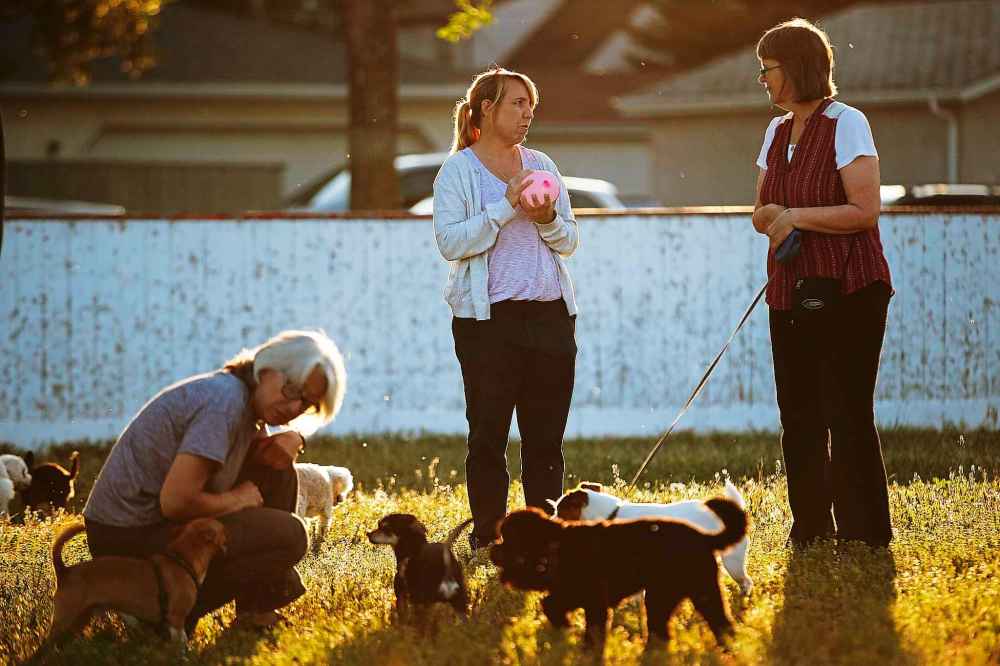
What should I do if my dog is a bully?
“It’s certainly not because you’ve done anything wrong, but you want to be able to intervene appropriately. Timing is really important. Use the cue word ‘No.’ Reinforce good behaviour by letting them go back to play,” McLeod says.
If you see your dog continuing to harass another dog who has communicated it doesn’t want to play, say, ‘No,’ clearly and firmly and lead them away from the dog.
“You can also use the word ‘Oops,’ which means ‘make another behaviour choice, or you’re getting removed.’ Lead them away, get them to sit for about 20 seconds. More than that and they’ll forget why they were removed. Then try again,” McLeod says.
If your dog continues to target that dog and engage in bullying behaviours, you will need to leave the area. Go for a walk, and try again another time.
Ultimately, it’s up to owners to ensure the dog park is a safe, fun and positive environment for everyone’s dogs. That involves everything from learning more about your pup or working with a certified trainer to remembering basic dog-park etiquette such as leaving food, toys and balls at home — “one toy and 20 dogs, not pretty,” O’Quinn says — and picking up after yourself.
It also means understanding that not every dog is meant for the dog park.
“It’s not for everybody,” O’Quinn says. “I find when dogs hit social maturity, it’s like us: when you get older and more mature, sometimes you just want a couple of good friends, and that’s enough.”
Interested in training or classes? Contact Janelle McLeod at janelle.run@gmail.com or visit her website at www.partnersinpaws.com.
jen.zoratti@freepress.mb.ca
Twitter: @JenZoratti

Jen Zoratti is a Winnipeg Free Press columnist and author of the newsletter, NEXT, a weekly look towards a post-pandemic future.
Our newsroom depends on a growing audience of readers to power our journalism. If you are not a paid reader, please consider becoming a subscriber.
Our newsroom depends on its audience of readers to power our journalism. Thank you for your support.
History
Updated on Friday, August 23, 2019 8:54 AM CDT: Corrects website URL



